I never really thought too much about trekking poles. After all, I’m young and have yet to experience any problems with knee or hip pain. And, if the terrain got tricky, I could always scout out a branch to use instead of a hiking pole.
But then I went on a few hikes with my boyfriend, who has muscle atrophy in his leg due to a bout of polio when he was young. Suffice to say, he needs the extra stability and his everyday cane just isn’t going to cut it on a trail.
After poking around in hiking groups, I realized that I’m not the only one who underestimated the advantages of using trekking poles. Pretty much all hikers over the age of 45 seem to use them, users say they saved their knees and hips, and many hikers say wish they’d started to use trekking poles earlier.

That doesn’t mean that trekking poles are absolutely necessary. I usually go hiking in woody areas and haven’t had trouble finding walking sticks to use (plus, it is an excuse to take out my survival knife to clean the stick).
So here are the pros and cons of walking sticks so you can decide for yourself.
The Pros of Trekking Poles
Trekking Poles Save your Hips and Knees
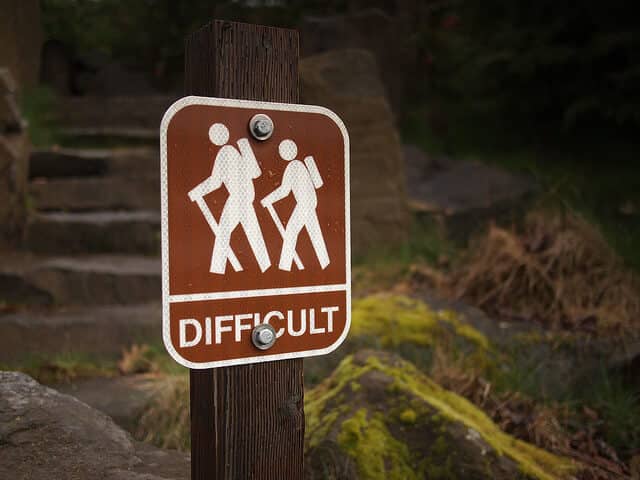
When you use trekking poles, you are distributing some of the weight and strain from your legs and hips to your arms, chest, and shoulders.
They are especially useful in taking the pressure off your knees in extreme uphill and downhill slopes. By reducing strain now, trekking poles can even save your hips and knees for the future. Numerous studies (like this one) back this up.

Today’s Trekking Poles Are Lightweight
Thanks to advantages in material, trekking poles today usually weigh in at under 16 ounces. Of course, that is still greater than the zero ounces that comes with not using any trekking poles. A lot of people find it worth this bit of weight for the extra stability and how the trekking poles help distribute weight.
Poles are a lot lighter than any walking stick you’d find, which means less strain on your arms and shoulders.
Trekking Poles Are Reliable
The main argument against trekking poles is that you can just find a stick to use as a walking stick/staff. However, this isn’t always possible! Lots of wilderness areas don’t have many trees (rocky cliffs, anyone?) so there is no guarantee you’ll be able to find a walking stick when you need one.
Even more annoying is trying to find two walking sticks of the same relative size. It is annoyingly unbalancing to hike with sticks of different diameters.
Trekking Poles Prevent Injury
Trekking poles give you extra stability when going over tough terrain like extreme slopes and river crossings. This is why trekking poles are stastically proven to reduce accident incidence.
Just make sure you are choosing the proper slip-proof hiking pole ends and holding them properly.

Trekking poles Can Be Used for Other Purposes
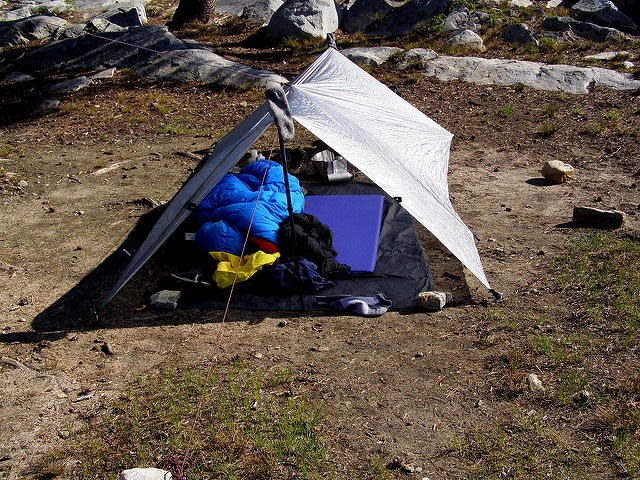
With some ingenuity, trekking poles can be a valuable survival tool. You can use them:
- To push a bear bag higher up when doing the counterbalance hang method
- To clear brush and spider webs off the trail in front of you
- To fight off a wild animal attack
- As a spare tent pole
- As a splint
There are even tents now that use trekking poles, so you don’t even have to bring poles for your tent Though, of course, you won’t be able to use the trekking poles while your tent is pitched. Also read: Best trekking pole tents.
Trekking poles Give You a Full body Workout

Because trekking poles shift some of the weight to your upper body, you are getting a full body workout with them. Now you’ll have muscular arms to match your thighs!
As a treadmill study found, trekking poles did not change overall metabolic energy expenditure — they just shifted the energy expenditure from the legs to the arm muscles. However, cardiovascular demands did increase despite subjects perceiving their exertion level to be lower.

Trekking Poles Require No Prep
If you want to use a walking stick, you should ideally clean it first so you don’t get blisters from your skin rubbing against bark or branch ends. By comparison, trekking poles require no prep.
Trekking poles Are Collapsible
If you don’t need your trekking poles anymore, you can collapse them and strap them on your backpack for later use.
By contrast, walking sticks are too bulky and long to carry with you for later use. You’d have to ditch the sticks and find a new one later on.
The Cons of Trekking Poles
Trekking Poles Mean Extra Gear to Carry
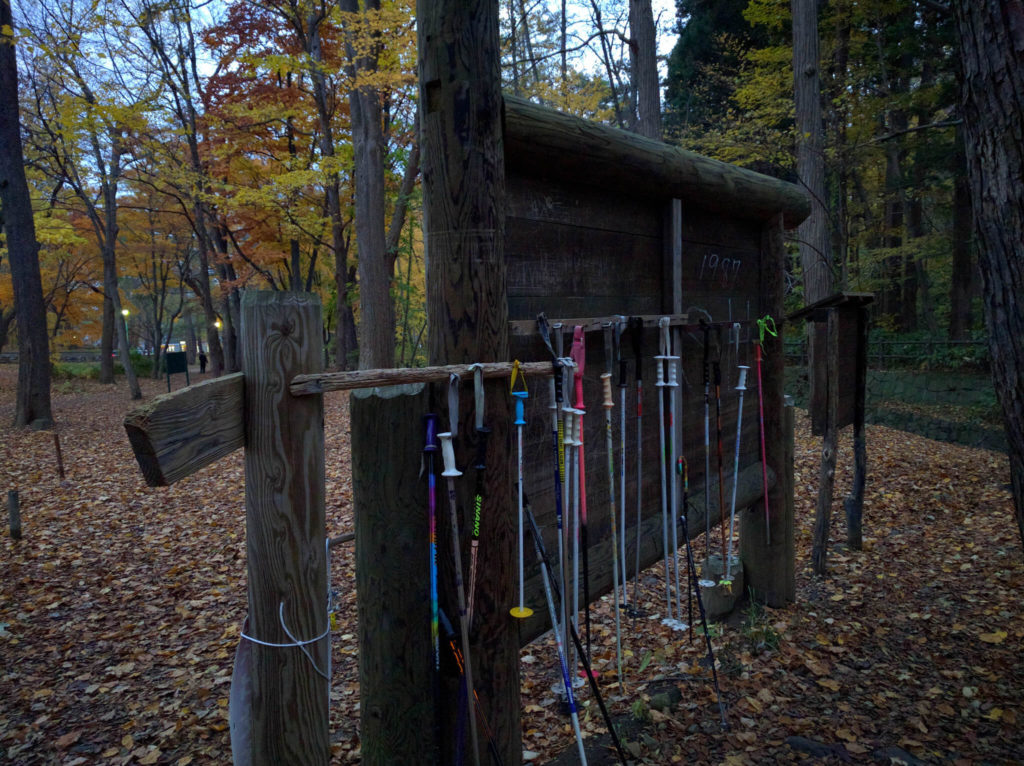
On flat, even terrain, trekking poles aren’t necessary for most hikers – but you’ll still have to carry the poles around. For ultra-lightweight backpackers, these extra ounces are a deal-breaker.
Trekking Poles Are Practically Useless on Flat Ground
For going up and down steep terrain, trekking poles are great. But they are practically useless – and thus annoying – on flat ground. Yes, you will be giving your upper body a workout by swinging those poles around, but not everyone wants to expend extra energy on the flat parts of their hike!
Trekking Poles Can Be Pricy
Good, lightweight trekking poles will cost you over $100. There are cheaper trekking poles available, but these can break on you.
Oh, and you are inevitably going to lose a hiking pole at some point and be pissed off at yourself for having to buy another.
Walking Sticks Can Be Fun to Make
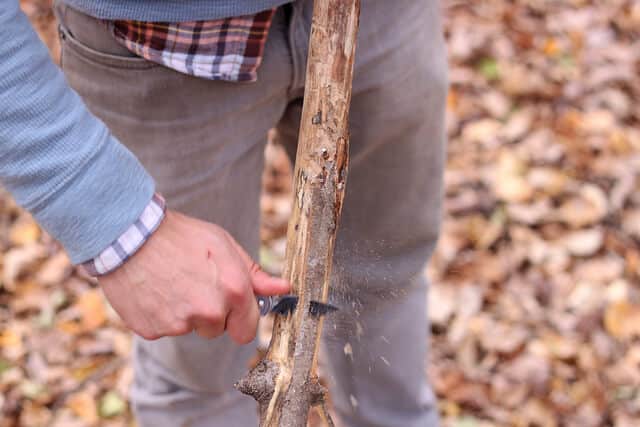
I personally love searching out a good walking stick at the start of a hike and using my knife to clean it up. Once at camp, you can also entertain yourself by carving it up. Oh, and it used to be common practice to leave walking sticks at the trailhead – not something that people do with trekking poles!
Trekking Poles Tie Up Your Hands
Want to stop and take a photo? Or how about take a snack or water break? You’ll have to put your poles down first.
There are trekking poles with straps, but they can be annoying because the poles will dangle you’re your wrists whenever you try to use your hands.
Also read: How to carry your camera while hiking
Trekking Poles Can Get Tangled
Sometimes trekking poles get tangled in foliage. If hiking in a group, they sometimes tap the calves of the person in front of you. You’ve also got to be careful not to trip anyone with the trekking poles, which is harder than it sounds if you like chatting with your hiking buddies while on the trail.
Trekking Poles Can Be a Safety Hazard
Trekking poles are only going to help you if they are used correctly. The proper position for trekking poles is:
- Elbows at 90 degrees.
- Elbows at your side.
- Hand through the bottom of the strap.
- Loose grip.
Some people have been injured by their trekking poles, such as when straps were used incorrectly and they fell. So pay attention to your pose!
You Still Aren’t Sold on Trekking Poles?
I hear you. I wouldn’t go spend $100 on trekking poles when I can usually find a walking stick for free.
Ask to borrow someone’s trekking poles for a short trip and see how you like them.
If you usually use walking sticks, you might be amazed by how lighter the poles are. Or, if you are a minimalist hiker, you might find the poles to be an annoying extra piece of gear.
Need Trekking Pole Recommendations?
For easy hikes, any cheap pair of trekking poles will be fine. If you are backpacking longer distances, it’s worth getting ultralight poles. The carbon poles by Cascade Mountain are very affordable. However, the ones by Black Diamond are better, albeit much pricier. Sometimes you can find discounted trekking poles at REI Garage.
Image credits:
“Camp” (CC BY 2.0) by glenngould
“Devil’s Lake III” (CC BY-NC-ND 2.0) by Josh Koonce
“Bandera Mountain Climb” (CC BY-NC-ND 2.0) by gclenaghan
“Trekking poles” (CC BY-NC-ND 2.0) by Óli Jón
“Difficult” (CC BY-NC 2.0) by Bushman.K
“Hiking poles” (CC BY 2.0) by npdoty


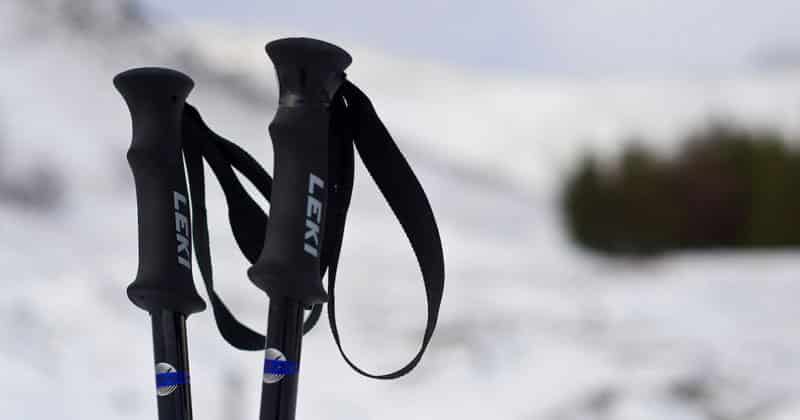
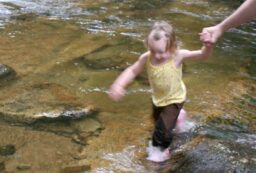









Post your comments